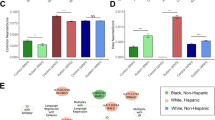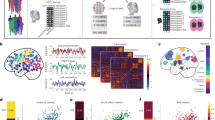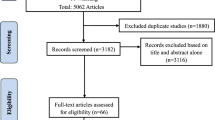Abstract
Over the past decade, research on the genetic variants underlying susceptibility to autism and autism spectrum disorders (ASDs) has focused on linkage and candidate gene studies. This research has implicated various chromosomal loci and genes. Candidate gene studies have proven to be particularly intractable, with many studies failing to replicate previously reported associations. In this paper, we investigate previously implicated genomic regions for a role in ASD susceptibility, using four cohorts of European ancestry. Initially, a 384 SNP Illumina GoldenGate array was used to examine linkage at six previously implicated loci. We identify linkage approaching genome-wide suggestive levels on chromosome 2 (rs2885116, MLOD=1.89). Association analysis showed significant associations in MKL2 with ASD (rs756472, P=4.31 × 10−5) and between SND1 and strict autism (rs1881084, P=7.76 × 10−5) in the Finnish and Northern Dutch populations, respectively. Subsequently, we used a second 384 SNP Illumina GoldenGate array to examine the association in seven candidate genes, and evidence for association was found in RELN (rs362780, P=0.00165). Further increasing the sample size strengthened the association with RELN (rs362780, P=0.001) and produced a second significant result in GRIK2 (rs2518261, P=0.008). Our results strengthen the case for a more detailed study of the role of RELN and GRIK2 in autism susceptibility, as well as identifying two new potential candidate genes, MKL2 and SND1.
Similar content being viewed by others
Log in or create a free account to read this content
Gain free access to this article, as well as selected content from this journal and more on nature.com
or
References
Baird G, Simonoff E, Pickles A et al: Prevalence of disorders of the autism spectrum in a population cohort of children in South Thames: the Special Needs and Autism Project (SNAP). Lancet 2006; 368: 210–215.
Autism Genome Project Consortium, Szatmari P, Paterson AD, Zwaigenbaum L et al: Mapping autism risk loci using genetic linkage and chromosomal rearrangements. Nat Genet 2007; 39: 319–328.
Santangelo SL, Tsatsanis K : What is known about autism: genes, brain, and behavior. Am J Pharmacogenomics 2005; 5: 71–92.
Fombonne E : Epidemiology of autistic disorder and other pervasive developmental disorders. J Clin Psychiatry 2005; 66 (Suppl): 3–8.
Muhle R, Trentacoste SV, Rapin I : The genetics of autism. Pediatrics 2004; 113: e472–e486.
Folstein S, Rutter M : Infantile autism: a genetic study of 21 twin pairs. J Child Psychol Psychiatry 1977; 18: 297–321.
Bailey A, Le Couteur A, Gottesman I et al: Autism as a strongly genetic disorder: evidence from a British twin study. Psychol Med 1995; 25: 63–77.
Freitag CM : The genetics of autistic disorders and its clinical relevance: a review of the literature. Mol Psychiatry 2007; 12: 2–22.
Persico AM, D’Agruma L, Maiorano N et al: Reelin gene alleles and haplotypes as a factor predisposing to autistic disorder. Mol Psychiatry 2001; 6: 150–159.
Bonora E, Beyer KS, Lamb JA et al: Analysis of reelin as a candidate gene for autism. Mol Psychiatry 2003; 8: 885–892.
Wang K, Zhang H, Ma D et al: Common genetic variants on 5p14.1 associate with autism spectrum disorders. Nature 2009; 459: 528–533.
Auranen M, Vanhala R, Varilo T et al: A genome-wide screen for autism-spectrum disorders: evidence for a major susceptibility locus on chromosome 3q25-27. Am J Hum Genet 2002; 71: 777–790.
International Molecular Genetic Study of Autism Consortium (IMGSAC): A full genome screen for autism with evidence for linkage to a region on chromosome 7q. Hum Mol Genet 1998; 7: 571–578.
International Molecular Genetic Study of Autism Consortium (IMGSAC): A genome-wide screen for autism: strong evidence for linkage to chromosomes 2q, 7q and 16p. Am J Hum Genet 2001b; 69: 570–581.
Philippe A, Martinez M, Guilloud-Bataille M et al: Genome-wide scan for autism susceptibility genes. Paris Autism Research International Sibpair Study. Hum Mol Genet 1999; 8: 805–812.
Maestrini E, Pagnamenta AT, Lamb JA et al: High-density SNP association study and copy number variation analysis of the AUTS1 and AUTS5 loci implicate the IMMP2L-DOCK4 gene region in autism susceptibility. Mol Psychiatry 2009; e-pub ahead of print.
Shuang M, Liu J, Jia MX et al: Family-based association study between autism and glutamate receptor 6 gene in Chinese Han trios. Am J Med Genet B Neuropsy Genet 2004; 131B: 48–50.
Jamain S, Betancur C, Quach H et al: Linkage and association of the glutamate receptor 6 gene with autism. Mol Psychiatry 2002; 7: 302–310.
Philippi A, Roschmann E, Tores F et al: Haplotypes in the gene encoding protein kinase c-beta (PRKCB1) on chromosome 16 are associated with autism. Mol Psychiatry 2005; 10: 950–960.
Lintas C, Sacco R, Garbett K et al: Involvement of the PRKCB1 gene in autistic disorder: significant genetic association and reduced neocortical gene expression. Mol Psychiatry 2008; 14: 705–718.
Cook Jr EH, Courchesne R, Lord C et al: Evidence of linkage between the serotonin transporter and autistic disorder. Mol Psychiatry 1997; 2: 247–250.
Mulder EJ, Anderson GM, Kema IP et al: Serotonin transporter intron 2 polymorphism associated with rigid-compulsive behaviors in Dutch individuals with pervasive developmental disorder. Am J Med Genet B Neuropsychiatr Genet 2005; 133B: 93–96.
Durand CM, Betancur C, Boeckers TM et al: Mutations in the gene encoding the synaptic scaffolding protein SHANK3 are associated with autism spectrum disorders. Nat Genet 2007; 39: 25–27.
Melke J, Goubran Botros H, Chaste P et al: Abnormal melatonin synthesis in autism spectrum disorders. Mol Psychiatry 2008; 13: 90–98.
Depienne C, Moreno-De-Luca D, Heron D et al: Screening for genomic rearrangements and methylation abnormalities of the 15q11-q13 region in the autism spectrum disorders. Biol Psychiatry 2009; 66: 349–359.
Lord C, Rutter M, Le Couteur A : Autism diagnostic interview – revised: a revised version of a diagnostic interview for caregivers of individuals with possible pervasive developmental disorders. J Autism Dev Disord 1994; 24: 659–685.
Lord C, Risi S, Lambrecht L ; et al: The Autism diagnostic observation schedule-generic: a standard measure of social and communication deficits associated with the spectrum of Autism. J Autism Dev Disord 2000; 30: 205–223.
Barrett JC, Fry B, Maller J, Daly MJ : Haploview: analysis and visualization of LD and haplotype maps. Bioinformatics 2005; 21: 263–265.
Weiss LA, Arking DE, The Gene Discovery Project of John Hopkins and the Autism Consortium: A genome-wide linkage and association scan reveals novel loci for autism. Nature 2009; 461: 802–808.
O’Connell JR, Weeks DE : PedCheck: a program for identification of genotype incompatibilities in linkage analysis. Am J Hum Genet 1998; 63: 259–266.
Lander E, Kruglyak L : Genetic dissection of complex traits: guidelines for interpreting and reporting linkage results. Nat Genet 1995; 11: 241–247.
Kazeem GR, Farrall M : Integrating case-control and TDT studies. Ann Hum Genet 2005; 69: 329–335.
Normand SL : Meta-analysis: formulating, evaluating, combining, and reporting. Stat Med 1999; 18: 321–359.
Purcell S, Cherny SS, Sham PC : Genetic power calculator: design of linkage and association genetic mapping studies of complex traits. Bioinformatics Applications Note 2003; 19: 149–150.
Lamb JA, Barnby G, Bonora E et al: Analysis of IMGSAC autism susceptibility loci: evidence for sex limited and parent of origin specific effects. J Med Genet 2005; 42: 132–137.
O’Donovan MC, Craddock N, Norton N et al: Identification of loci associated with schizophrenia by genome-wide association and follow-up. Nat Genet 2008; 40: 1053–1055.
Gallagher L, Becker K, Kearney G et al: Brief Report: a case of autism associated with del(2)(q32.1q32.2) or (q32.2q32.3). J Aut Dev Dis 2003; 33: 105–108.
Conroy J, Cochrane L, Anney RJL et al: Fine mapping and association studies in a candidate region for autism on chromosome 2q31-q32. Am J Med Genet B Neuropsychiatr Genet 2008; 150B: 535–544.
Veenstra-VanderWeele J, Christian SL, Cook Jr EJ : Autism as a paradigmatic complex genetic disorder. Annu Rev Genomics Hum Genet 2004; 5: 379–405.
Barnby G, Abbott A, Sykes N et al: Candidate-gene screening and association analysis at the autism-susceptibility locus on chromosome 16p: evidence of association at GRIN2A and ABAT. Am J Hum Genet 2005; 76: 950–966.
Tsuchiya N, Ochiai M, Nakashima K, Ubagai T, Sugimura T, Nakagama H : SND1, a Component of RNA-induced silencing complex, is up-regulated in human colon cancers and implicated in early stage colon carcinogenesis. Cancer Res 2007; 67: 9568–9576.
Marshall CR, Noor A, Vincent JB et al: Structural variation of chromosomes in autism spectrum disorder. Am J Hum Genet 2008; 82: 477–488.
Morrow EM, Yoo SY, Flavell SW et al: Identifying autism loci and genes by tracing recent shared ancestry. Science 2008; 321: 218–223.
Bray NJ, Kirov G, Owen RJ et al: Screening the human protocadherin 8 (PCDH8) gene in schizophrenia. Genes Brain Behav 2002; 1: 187–191.
Carlsson ML : Hypothesis: is infantile autism a hypoglutamatergic disorder? Relevance of glutamate – serotonin interactions for pharmacotherapy. J Neural Transm 1998; 105: 525–535.
Kim SA, Kim JH, Park M, Cho IH, Yoo HJ : Family-based association study between GRIK2 polymorphisms and autism spectrum disorders in the Korean trios. Neuro Res 2007; 58: 332–335.
Dutta S, Das S, Guhathakurta S et al: Glutamate receptor 6 gene (GluR6 or GRIK2) polymorphisms in the Indian population: a genetic association study on autism spectrum disorder. Cell Mol Neurobiol 2007; 27: 1035–1047.
Acknowledgements
We thank the families who have participated in the study and Chris Allan at the WTCHG core genomics facility for technical support. This paper includes data generated by the Autism Genome Project (AGP) (see supplementary information for full AGP authorship list.) The AGP gratefully acknowledges the contributions of the families who participated in this study. Current support for the AGP comes mainly from grants from Autism Speaks (USA), Genome Canada (Canada), the Health Research Board (HRB; Ireland), the Hilibrand Foundation (USA) and the Medical Research Council (MRC; UK). Funding: This work was funded by EC 6th FP AUTISM MOLGEN (grant number LSHM-CT-2005–512158) and was also supported by the Wellcome Trust (grant number 075491/Z/04).
Author information
Authors and Affiliations
Consortia
Corresponding author
Ethics declarations
Competing interests
The authors declare no conflict of interest.
Additional information
Supplementary Information accompanies the paper on European Journal of Human Genetics website
Supplementary information
Appendix
Appendix
Members of the EU Autism MOLGEN Consortium in alphabetical order are as follows:
Reija Alen1, Elena Bacchelli2, Anthony Bailey3, Gillian Baird4, Agatino Battaglia5, Catalina Betancur6, Annelies de Bildt7, Francesca Blasi2, Sven Bölte8, Patrick Bolton9, Thomas Bourgeron10, Karen Brøndum-Nielsen11, Simona Carone2, Pauline Chaste10, Andreas Chiocchetti12, Eftichia Duketis13, Christelle Durand10, Herman van Engeland14, Penny Farrar15, Sabine Feineis-Matthews13, Bärbel Felder12, Kostas Francis3, Jeanne Fremolle16, Carina Gillberg17, Christopher Gillberg17, Hany Goubran-Botros10, Demetrious Haracopos11, Evelyn Herbrecht13, Richard Holt15, Gemma Honeyman3, Jasmin Honold13, Renske Houben14, Aislinn Hutchison3, Roberta Igliozzi5, Torben Isager11, Irma Järvelä1, Maria Johansson17, Maretha de Jonge14, Sabine M. Klauck12, Anne Koivisto1, Hanna Komu1, Marion Leboyer18, Ann Le Couteur19, Justin Lowen3, Elena Maestrini2, Carine Mantoulan16, Jonas Melke10, Helen McConachie19, Ruud Minderaa7, Anthony Monaco15, Erik Mulder7, Taina Nieminen-von Wendt1, Ilona Nummela1, Gudrun Nygren17, Geeta Pakalapati12, Katerina Papanikolaou20, Barbara Parrini5, Lennart Pederson11, Liz Pellicano3, Catherine Pienkowski16, Judith Ponsford3, Annemarie Poustka12, Fritz Poustka13, Maria Rastam17, Karola Rehnström1, Katy Renshaw3, Bernadette Rogé16, Dorothea Ruehl13, Michael Rutter4, Susan Sarenius1, Gabriele Schmötzer13, Claudia Schuster12, Henrik Anckarsater17, Raffaella Tancredi5, Maïté Tauber16, John Tsiantis20, Nora Uhlig13, Raija Vanhala1, Simon Wallace3, Lennart von Wendt1, Kerstin Wittemeyer3, Tero Ylisaukko-oja1.
1Helsinki University Central Hospital, Helsinki, Finland.
2University of Bologna, Alma Mater Studorium, Bologna, Italy.
3Department of Psychiatry, University of Oxford, Oxford, UK.
4Newcomen Centre, Kings College London, London, UK.
5Stella Maris Clinical Research Institute for Child and Adolescent Neuropsychiatry, Pisa, Italy.
6INSERM U952, CNRS UMR7224, UPMC Univ Paris 06, Paris, France.
7Stichting Universitaire en Algemene Kinder – en Jeugdpsychiatrie Noord – Nederland (Accare)/University Medical Center Groningen, University Center Child and Adolescent Psychiatry Groningen, Groningen, The Netherlands.
8Department of Child and Adolescent Psychiatry, Central Institute of Mental Health, Mannheim, Germany.
9Department of Child and Adolescent Psychiatry, Kings College London, London, UK.
10Institut Pasteur, Paris, France.
11Center for Autisme, Herlev, Denmark.
12Division of Molecular Genome Analysis, German Cancer Research Center (DKFZ), Heidelberg, Germany.
13Department of Child and Adolescent Psychiatry, Psychosomatics and Psychotherapy, Johann Wolfgang Goethe-University, Deutschordenstr. 50, 60528, Frankfurt/Main, Germany.
14Department of Child and Adolescent Psychiatry, University Medical Centre Utrecht, Utrecht, The Netherlands.
15Wellcome Trust Centre for Human Genetics, University of Oxford, Oxford, UK.
16Universite de Toulouse le Mirail., Toulouse, France.
17Department of Child and Adolescent Psychiatry, Goteborg University, Goteborg, Sweden.
18INSERM U955; AP-HP, Henri Mondor-Albert Chenevier Hospital, Department of Psychiatry; Université Paris 12, Faculty of Medicine, Créteil, France.
19Department of Child and Adolescent Psychiatry, Sir James Spence Institute, University of Newcastle, Royal Victoria Infirmary, Newcastle, UK.
20Department of Child Psychiatry, Medical School, National and Kapodistrian University of Athens, Athens, Greece.
Rights and permissions
About this article
Cite this article
Holt, R., Barnby, G., Maestrini, E. et al. Linkage and candidate gene studies of autism spectrum disorders in European populations. Eur J Hum Genet 18, 1013–1019 (2010). https://doi.org/10.1038/ejhg.2010.69
Received:
Revised:
Accepted:
Published:
Issue date:
DOI: https://doi.org/10.1038/ejhg.2010.69
Keywords
This article is cited by
-
SRF in Neurochemistry: Overview of Recent Advances in Research on the Nervous System
Neurochemical Research (2022)
-
A systematic review of common genetic variation and biological pathways in autism spectrum disorder
BMC Neuroscience (2021)
-
Loss of serum response factor in mature neurons in the dentate gyrus alters the morphology of dendritic spines and hippocampus-dependent behavioral tasks
Brain Structure and Function (2019)
-
Synaptic localisation of SRF coactivators, MKL1 and MKL2, and their role in dendritic spine morphology
Scientific Reports (2018)
-
High resolution analysis of rare copy number variants in patients with autism spectrum disorder from Taiwan
Scientific Reports (2017)



